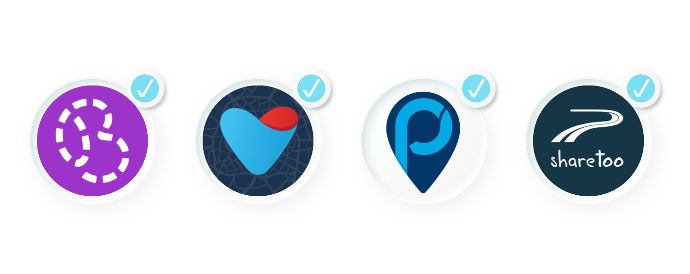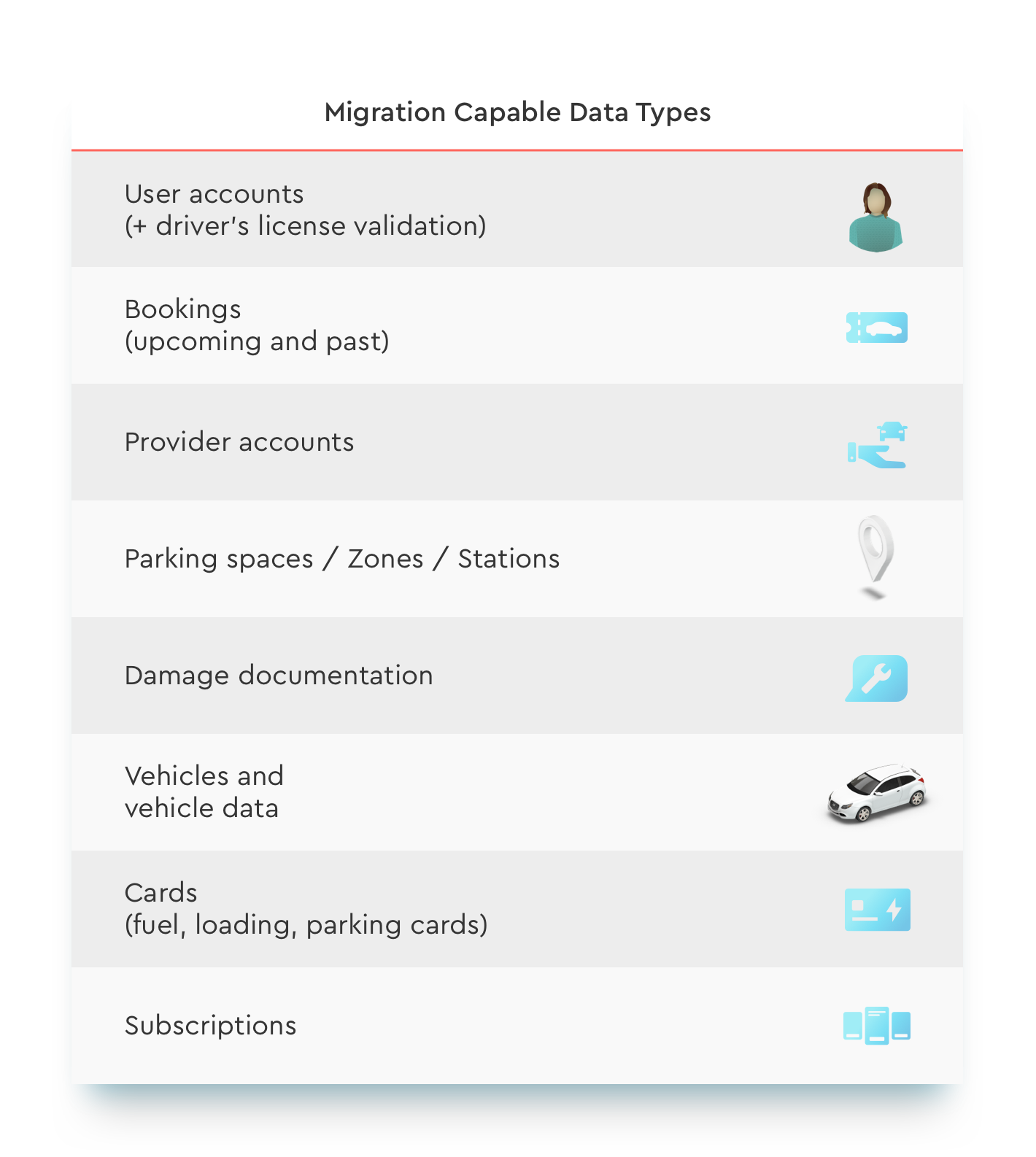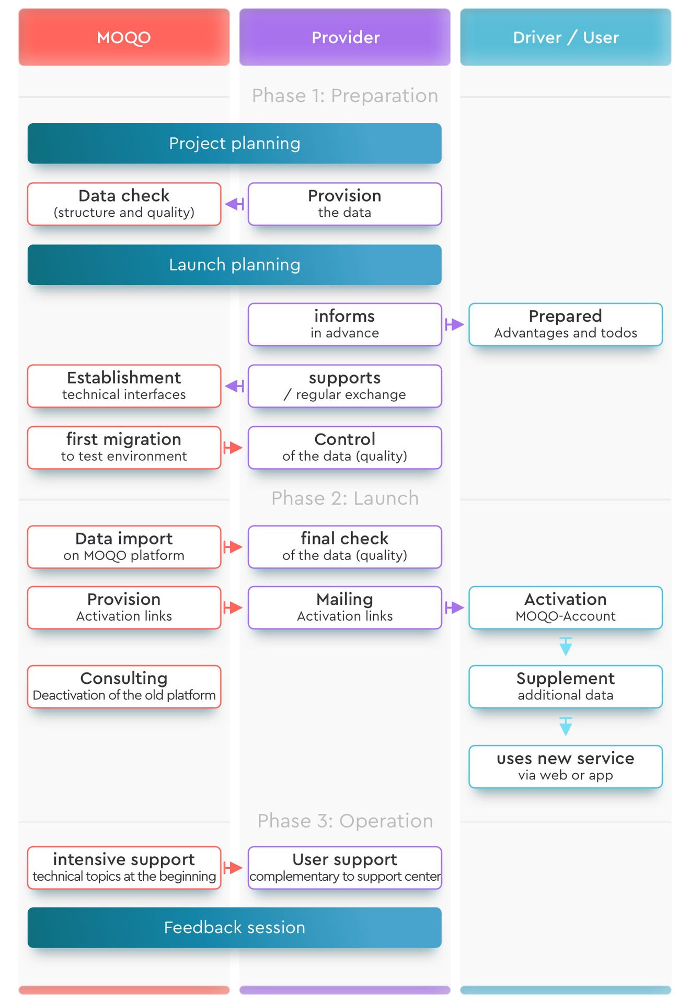A wide variety of reasons give motivation to move to a new system. As a sharing provider, you may want to outsource platform development in order to focus on operations, expand the feature set or business models, or ensure stability for scaling your own service.
But is it even possible to move in the middle of ongoing operations with the entire user and data set? Such a migration should not be underestimated. However, with the appropriate quality standards, it can be carried out smoothly.
The migration process at MOQO has already been tested several times in practice and refined with each migration of a new Inventory system.
Migration with existing systems
The transition from one platform to another should be well thought out and should not take place too frequently. However, the trigger is usually the emergence of one or more significant problems with the existing system. Sometimes this is quite clearly indicated by the need for additional functionality, significant changes in the marketplace, or the loss of a service partner. In other cases, it is more of a gradual process, for example, when the workload of regular tasks scales proportionally in parallel with user and vehicle numbers, or when the service structure becomes increasingly difficult to map.
This is followed by troubleshooting, analysis and research into internal and external solutions and opportunities for improvement. Often this phase concludes with the realization that it would be a good idea to start with an external partner or to change the external partner.

A process that has been tested several times
The MOQO network has been significantly expanded in recent months with the addition of a collaboration with new partners already established in their respective regions. The starting signal for the migration process at MOQO was the inclusion of the Norwegian market leader in car sharing, Bilkollektivet. This was followed, among others, by Popcar in Australia, Sharetoo as a Porsche Bank sharing service, and Velocity right on the doorstep in Aachen, Germany.
In each case, the structure of the existing system was analyzed, the migration was tested in advance and verified by the partner, so that the company was then optimally prepared for the actual migration. With each move, the process was further improved.
However, it is also important to emphasize the awareness that the assistance of the sharing provider is indispensable for a successful process. On the one hand, MOQO needs access to the inventory system and a suitable contact person for the technical implementation. On the other hand, the sharing provider should inform their customers community about the change as early as possible and also point out the benefits and tasks of the migration.
Process in 4 steps
Migration always follows the same principle and consists of four steps.

Analytical phase
MOQO receives data as an export and views the contents and elements of the database as well as their quality. Possible discrepancies between the data types of the inventory system and the MOQO platform are identified and discussed.
Preparation
MOQO checks how the migration works from a technical point of view. For example, a data exchange via an interface or the export from the inventory system via a suitable file format.
Testing
The migration is simulated in a test environment, the success is checked by MOQO as well as by the sharing provider and readjusted if necessary. It is important to have successfully completed this process before the actual launch.
Migration
After successful preparation, the final data migration to the MOQO platform takes place. The sharing provider supports its drivers with an account activation link to the MOQO platform.
Hint
Transparent communication with users by the sharing provider before, during and after migration is strongly recommended. This can minimize irritation and increase user acceptance. Take your users with you on the journey and inform them about the potential and added value of the platform change
Data types: What specifically can be migrated?
The following data can generally be transferred from the legacy system to the MOQO platform:
(The compatibility of the two platforms will be checked for each individual case).

Tasks of the individual roles
In order for the migration to the MOQO platform to be a complete success, everyone involved must cooperate and complete individual tasks. The following diagram provides an overview of the process:


A change to get going
MOQO can now point to numerous examples of successful changeover with existing systems. The move has regularly improved the situation for providers - among the benefits gained are greater scalability, digitization, automation and improved options in the supply structure. Sharing providers also benefit from an ever-growing number of features and tools on the MOQO platform that enable new business models and improvements in the operational process. The upgrade in quality was reflected not least in the respective app ratings.




